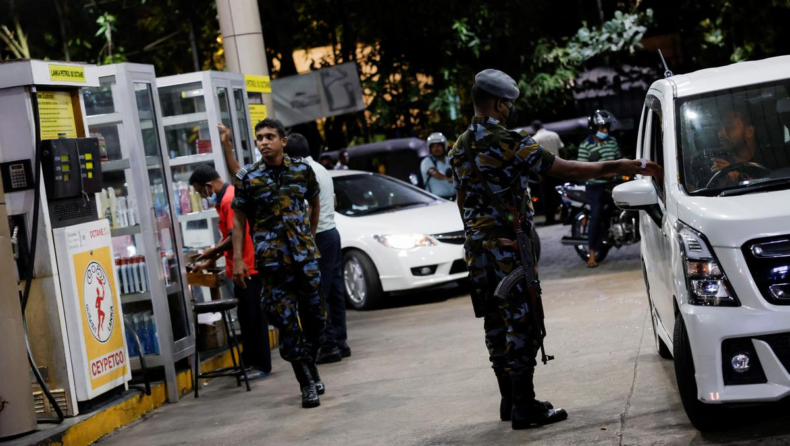Sri Lanka left with less than a day’s worth of fuel informs Sri Lankan Minister; the next shipment to arrive between 22nd and 23rd July

Source: sri lanka in distress fuel queues – Bing images
Colombo: The Energy Minister said on Sunday that Sri Lanka has less than a day’s worth of fuel left. The nation is persistently struggling in the clutches of failing economy and incompetent politics. With the halt of public transport the economic crisis has deepened.
Though most fuel stations have been without fuel for days yet the queues for fuel have been increasing for days. Kanchana Wijesekara, the Energy Minister said the reserves of petrol in the country were about 4,000 tonnes which is below one day’s consumption estimate.
To quote him,”The next petrol shipment is expected between the 22nd and 23rd (of July).” He further stated that suppliers had been contacted but the delivery before 22nd July cannot be confirmed. A few days back, the Sri Lankan PM claimed that the economy had collapsed and that they were unable to purchase oil.
Last week, impecunious Colombo decided upon a two-week interlude in all fuel sales except for essential use only, in order to save petrol and diesel for emergencies. Shops remained closed on Monday but as the nation rises to work on Monday the situation will deteriorate.
Sri Lankans were seen trying to cope with the situation but the crisis has left them distraught and hopeless. The country’s two-third fleet is that of privately owned bus services; they too were functioning on a skeleton service on Sunday. The shortage of fuel has reprehensibly exacerbated the failing economy of Sri Lanka.
The Private Bus Operators Association Chairman, Gemunu Wijeratne stated,”We operated about 1,000 buses across the country out of the 20,000 owned by our members. The situation will certainly get worse tomorrow because we have no way of getting diesel.”
The services would definitely come to a halt on Monday due to lack of resolution. Not only buses but also three wheel taxis have suffered the wrath of fuel shortage.
What is happening in Sri Lanka?
The island country of Sri Lanka with a population of about 22 million, has been struggling with constant inflation and political impotence. Though Sri Lanka has battled with anomalous economic crises since attaining independence from Britain in 1948, yet the crisis of 2022 is the worst of its kind. The Rajapaksa brothers who held the reins of Colombo have been proven inadequate in overcoming the perpetual rising prices.
Under the tenure of the previous government, Sri Lanka befriended the neo-colonialist China, which led to the increase in the burden of debt on Sri Lanka. In order to repay this debt Colombo leased the Hambantota airport to China for 90 long years, falling prey to China’s ambition of increasing footprints in the Indian Ocean Region. Another blow to Colombo was the infamous Easter killings of 2019 after which the tourism industry excruciatingly suffered.
The final nail in the coffin of the economy of Sri Lanka was the emergence of Covid 19, which led the major industries of Sri Lanka to capitulate. With Russia invading Ukraine, earlier this year, the last glimmer of hope for the Sri Lankans dimmed incessantly giving rise to dissatisfaction and riots.
Sri Lanka has been unable to keep up with the rising prices due to shortage of supply of basic amenities. The leadership had turned a blind eye until the Lankans rose in protest after living in perpetual misery. In late march, there were cases of Sri Lankans trying to enter India illegally in order to evade the economic crisis.
It is not only failing economically but also tapering politically. Being a semi-presidential representative democratic republic, Sri Lanka, has the President as the head of both state and the government but the people in power have neglected the needs of the people worsening the current situation.
The fall in foreign currency reserves and the deficit in essential imports has all led to the country’s despicable situation today. As Colombians face record high inflation and lengthy power blackout the government’s chances of mitigating the crisis have been all in vain.
Though the government tries to save up energy by closing all non-essential institutions, the catastrophe has struck its last cord. The local media has reported angry citizens getting caught in brawls outside the petrol stations. In another incident, troops had to fire upon protests against the military jumping the queue.
As Sri Lanka mitigates the current situation by initiating talks with the IMF, seeking a possible rescue is highly unlikely keeping in mind the defaulted debt of $51 billion.












